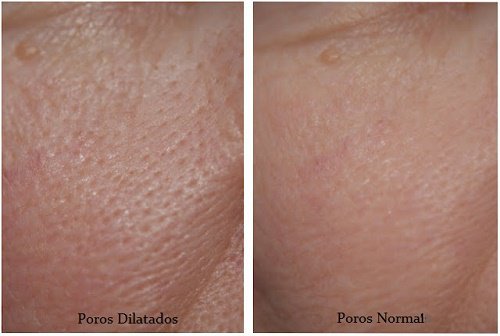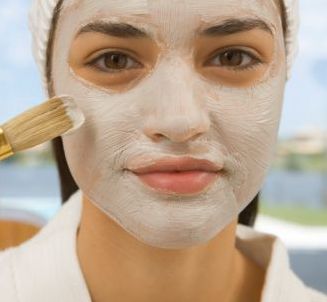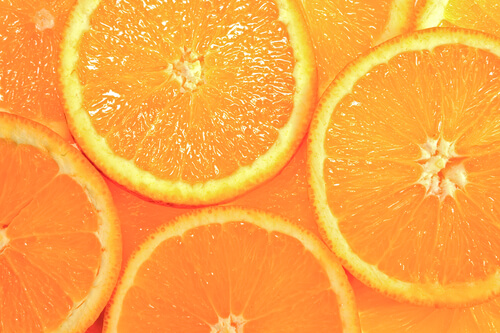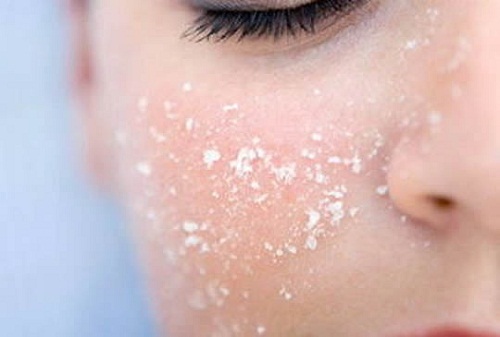Enlarged Pores? Try These 3 Masks!


Written and verified by psychologist Valeria Sabater
Enlarged pores are very common today. A lot of people use makeup to try to cover them up. But before you try to hide them, why not learn about what causes pores to dilate? We’ll explain in today’s article.
What causes enlarged pores?
They can be really annoying. You know it’s not due to any disease and there really aren’t any negative side effects. But you simply don’t like them. Lots of women choose to hide their pores using makeup, but that can sometimes worsen the situation.
By clogging up pores with makeup or other substances, you can actually make them look worse. The more common reasons for enlarged pores lie in the kind of skin tone you have, as well as the following:
- Remember that your skin contains glands that are constantly producing sebum. You see your pores open when your skin is releasing this substance.
- Pores can appear larger or smaller due to your genetic makeup, excess oils or sweat, or poor skin care habits.
- Larger pores produce more sebum. This isn’t a bad thing – on the contrary, it helps fight infections and lubricates your skin, but obviously this means you’ll have a shinier face with more visible pores.
- The area where enlarged pores are most obvious is the nose.
Read also:
Detox Treatment For Your Face
Masks that can help reduce the appearance and size of your pores
1. Wheat flour and lemon mask
- ½ cup of warm water
- 3 tablespoons of flour
- Juice from ½ lemon
Why is this mask a good choice for treating enlarged pores? Remember that lemon juice is a great astringent, which helps eliminate excess oil, blackheads, and reduce the size of pores.
As for wheat, it’s incredibly beneficial to your skin. Wheat contains zinc, vitamin E, and B complex vitamins. This provides nutrients the skin needs, reduces oil, moisturizes, provides elasticity, and helps close up pores. Want to know how to make this mask?
- It’s a very simple recipe. Just create a paste that’s thick enough to apply to your face. Mix the flour, lemon, and water together until they’re homogeneous.
- Apply the paste to your face and leave it on for 20 minutes, trying to keep your facial muscles relaxed.
- Rinse with cool water, and apply your usual moisturizer.
- This mask is great for using twice a week, in the evenings.
5 Ways to Moisturize Your Skin
 2. Aloe and orange mask
2. Aloe and orange mask
- Juice of 1 orange
- 1 tablespoon of aloe vera gel
This combination might surprise you, but it’s one of the most effective ways to treat enlarged pores. Oranges are rich in vitamin C, which helps exfoliate the skin and clean the pores. They also contain alpha hydroxy acids that help close the pores little by little.
Aloe vera is great for the skin. It helps balance your complexion, clarifying and toning your face, while eliminating any blemishes. Now pay attention to the way we make this mask.
- Start with orange juice.
- Scrape a tablespoon of aloe gel from a fresh leaf.
- Heat the orange juice and add the aloe little by little to ensure the ingredients mix well.
- Once you have a homogeneous blend, let it cool slightly, but make sure it stays warm.
- Apply this mask using a cotton ball.
- Leave it on for about 20 minutes, before rinsing with cool water.
- Apply your regular moisturizer.
 3. Baking soda and egg white mask
3. Baking soda and egg white mask
- ½ cup of milk
- 1 tablespoon of baking soda
- 1 egg white
This is an ideal pore-reducing remedy. The baking soda acts as an astringent, exfoliating and cleansing the skin. Combining it with milk and egg white will nourish and tone your skin. Here’s how to make it:
- Heat a little bit of milk until it’s lukewarm.
- Add a small spoonful of baking soda, along with the egg white.
- You can either use a blender or a spoon to mix well. You want everything to be homogeneous.
- This mask is very runny, so use a cotton ball to apply it to your skin.
- All you’ll do is massage your skin with this mask, rather than leave it on to act. Use circles as you apply it to tone and stimulate your pores.
- This is a great treatment for two days a week. Once you’ve massaged your face for 15 minutes, rinse with cool water and apply your moisturizer. Piece of cake.

Finally we should mention that these masks work best if you use them after a hot shower. The steam opens up your pores and helps these natural remedies work better.
Use any mask you like. All of them are ideal for oily or combination skin. It’s a good idea to always wash your face thoroughly beforehand, and then use your regular moisturizer. Little by little, you’ll notice that the size of your pores is diminishing.
All cited sources were thoroughly reviewed by our team to ensure their quality, reliability, currency, and validity. The bibliography of this article was considered reliable and of academic or scientific accuracy.
- Lee, S. J., Seok, J., Jeong, S. Y., Park, K. Y., Li, K., & Seo, S. J. (2016, March 23). Facial pores: Definition, causes, and treatment options. Dermatologic Surgery. Lippincott Williams and Wilkins. https://doi.org/10.1097/DSS.0000000000000657
- Shewry PR, Hey SJ. The contribution of wheat to human diet and health. Food Energy Secur. 2015;4(3):178–202. doi:10.1002/fes3.64
- Kim, B. Y., Choi, J. W., Park, K. C., & Youn, S. W. (2013). Sebum, acne, skin elasticity, and gender difference – which is the major influencing factor for facial pores? Skin Research and Technology, 19(1). https://doi.org/10.1111/j.1600-0846.2011.00605.x
- Feily, A., & Namazi, M. R. (2009). Aloe vera in dermatology: A brief review. Giornale Italiano Di Dermatologia e Venereologia. Edizioni Minerva Medica.
- Pazyar, N., Yaghoobi, R., Kazerouni, A., & Feily, A. (2012, March). Oatmeal in dermatology: A brief review. Indian Journal of Dermatology, Venereology and Leprology. https://doi.org/10.4103/0378-6323.93629
This text is provided for informational purposes only and does not replace consultation with a professional. If in doubt, consult your specialist.








